I
A few weeks ago I made spinach pasta on a Sunday night. It wasn’t a particularly complicated recipe, but it involved cooking the spinach, straining and chopping it, then adding it to the dough as you made it, resting the dough, rolling it out, and cooking it. Since that didn’t seem like a particularly hard project (many parts, but none difficult), I was also prepping a few other things for the week ahead.
But the evening got away from me, and by the time I was actually cooking the pasta it was much later than I expected (almost 9pm). Since fresh pasta is often promised to be a transcendent and simple meal, I hadn’t planned to dress it with more than some butter, olive oil, and Parmeggiano Reggiano. I tasted some from the pan and was instantly disappointed by the blandness. Where was my transcendent simplicity????????????
This failure exacerbated stresses that were building for the work-week, and led to me sobbing over my terrible pasta that I had put so much effort into. (While I was finishing crying, Will excavated some pesto from the freezer and started defrosting it to save my dinner, and therefore wins Husband-of-the-Year one hundred times over.)
II
The next week I wanted to try a simple (catching a theme here?) vegan soup that involved a vibrantly green and thick herb coconut broth, broccoli, snap peas, tofu, and rice. In the cookbook photo the author used black rice noodles, which were incredibly dramatic and contrasted beautifully with the green broth. The photo of this dish makes you feel cleansed and restored just from looking at it. Like you’ve achieved absolute purity and suddenly understand why vegans forego meat and are ready to give it up forever too.
My first failure was in the liquid. A high speed blender was called for to combine the coconut milk, broth, and herbs. I don’t own a $500 blender, and I figured my stick blender could stand in as it usually does for pureed soups. Since the coconut milk/broth/lemongrass mixture is supposed to steep off the stove I tried to use my stick blender directly in the bowl it was cooling in. After a small wave covered my counter, I switched to the food processor. No amount of time processing would yield the thick, uniformly green broth the photo. Instead I was left with a thin broth with flecks of cilantro throughout. Given I wasn’t using the right equipment to start I wasn’t too dissuaded.
The recipe notes said to serve it with rice noodles or rice, and I happened to have black rice! I cooked some up, made my meager broth, and added in the vegetables and tofu. When it was time to serve, the rice went into the bowl, and was topped by the soup. But I had not rinsed the rice thoroughly enough. What had been a passable green broth, was now the color of mud.
I’m not one to judge a meal by its looks. But the photo I had for comparison was just so beautiful, and I was staring down at a puddle. I hoped taste would change my mind, but what I was eating did not live up to my expectations. It was thin, herby, flat, and very……healthy tasting. Like something I should always eat, but would never want to. It tasted like how people who hate vegan food on principle expect vegan food to taste. (I make vegan food on the regular and it can be overwhelmingly delicious, but this was not one of those times.)
III
Last week I knew I had an especially long work-day ahead of me, so I planned a fool-proof and almost effortless meal: tortellini with pesto and roasted asparagus. I was NOT making the pasta this time (it came pre-made from Wegmans). The pesto would be the last from the stash in the freezer that I was reminded about when Will used it to save my previous pasta dinner. The asparagus would go in the oven at 425F with salt, pepper, and olive oil for 15 minutes.
I put the asparagus in the oven and put the water on to boil. I had a double pack of tortellini, but decided to cook both in case we needed extra meals later in the week. This was a total of eight servings of pasta, which is way more than I usually make, but figured it would be useful when I had to work over the weekend.
The water on to boil, and put asparagus went in the oven. I put about the same amount of water in the pot I use for a pound of pasta, and didn’t think twice about it. The tortellini was in two separate but attached packs, and when I put the first in the pot was almost full, but it seemed like more could fit in. Partway through the addition of the second pack the water came dangerously close to the top, and I was in trouble. I took out a measuring cup to remove some of the water, but couldn’t remove enough of it in time. the tortellini threatened to boil over, and I knew the rest couldn’t fit in the pan…but I tried anyways.
Had I never made pasta before? Did I not understand that doubling the amount of pasta you make means you should also double the size or number of vessels you cook them in?
It was too late in the game to criticize myself; I just had to fix the problem. Some water went into the kettle to boil quickly, and I moved some of the pasta into a small pot. The tortellini monster was subdued for the moment. Eventually everything was cooked but somehow not overcooked, and I returned to the glass of wine I had hurtfully ignored.
The asparagus, by the way, was perfect.
IV
At work I teach kids cooking classes. Cooking with children is always an adventure, and often times they are doing something for the first time ever with me as their guide: cracking an egg, using a knife, measuring the flour. I always leave room for error in these situations and tell them this: sometimes when we cook we get delicious food, sometimes delicious food and a lesson, and sometimes just the lesson. But no matter what, you walk away with something.



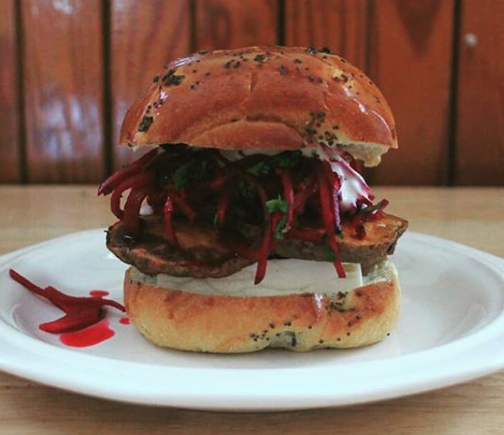 Today I went to an event for work that included a catered lunch. It was a classic sandwich spread: turkey with lettuce and tomato on a sub roll, ham and cheese on swirled rye, a vegetable wrap, salad, chips, and cookies. I took a half of each the turkey and the vegetable wrap. The turkey sandwich was an assemblage of things that were in function a sandwich, but the individual ingredients were indistinguishable and mostly devoid of flavor.
Today I went to an event for work that included a catered lunch. It was a classic sandwich spread: turkey with lettuce and tomato on a sub roll, ham and cheese on swirled rye, a vegetable wrap, salad, chips, and cookies. I took a half of each the turkey and the vegetable wrap. The turkey sandwich was an assemblage of things that were in function a sandwich, but the individual ingredients were indistinguishable and mostly devoid of flavor.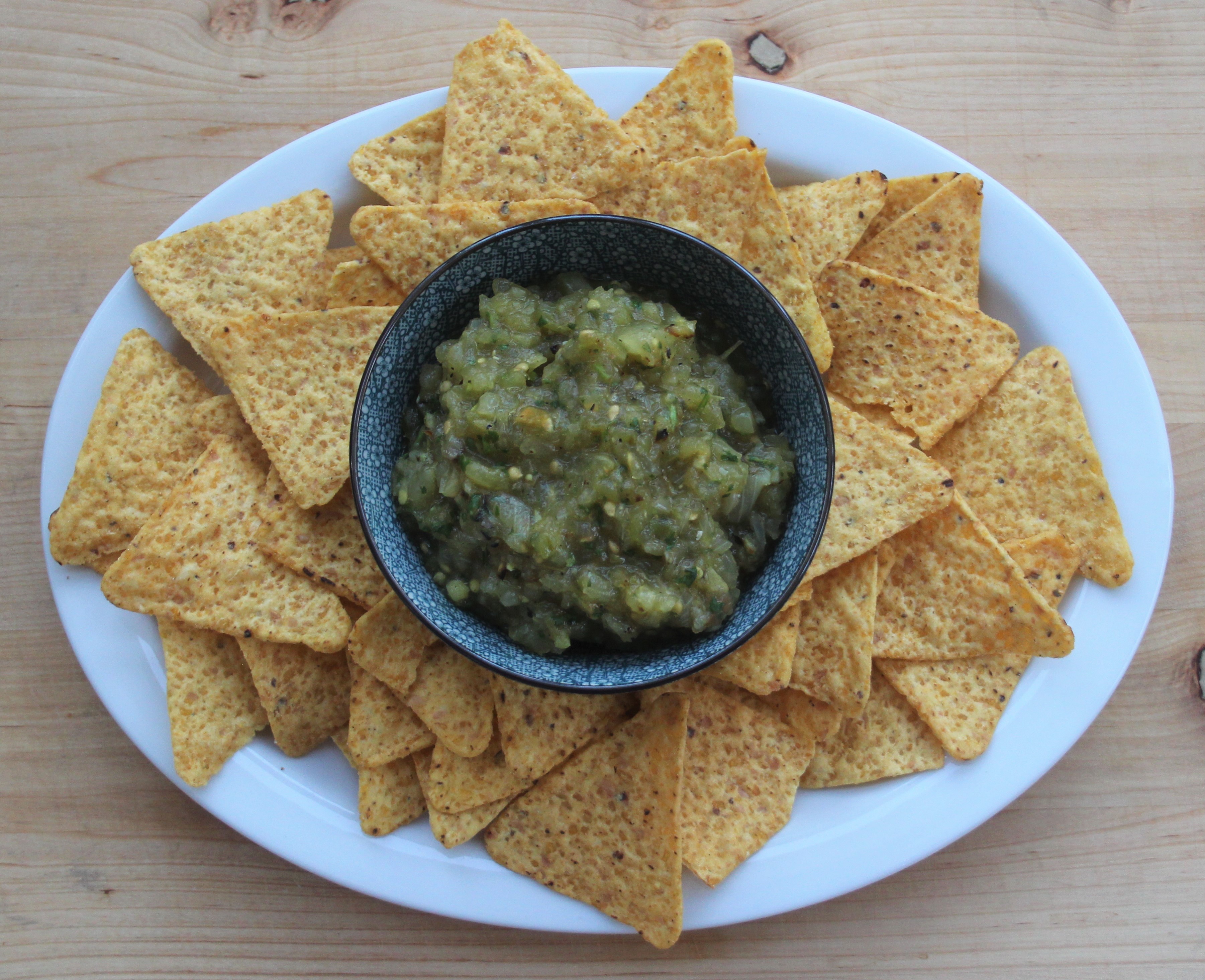 My final (weh!)
My final (weh!) 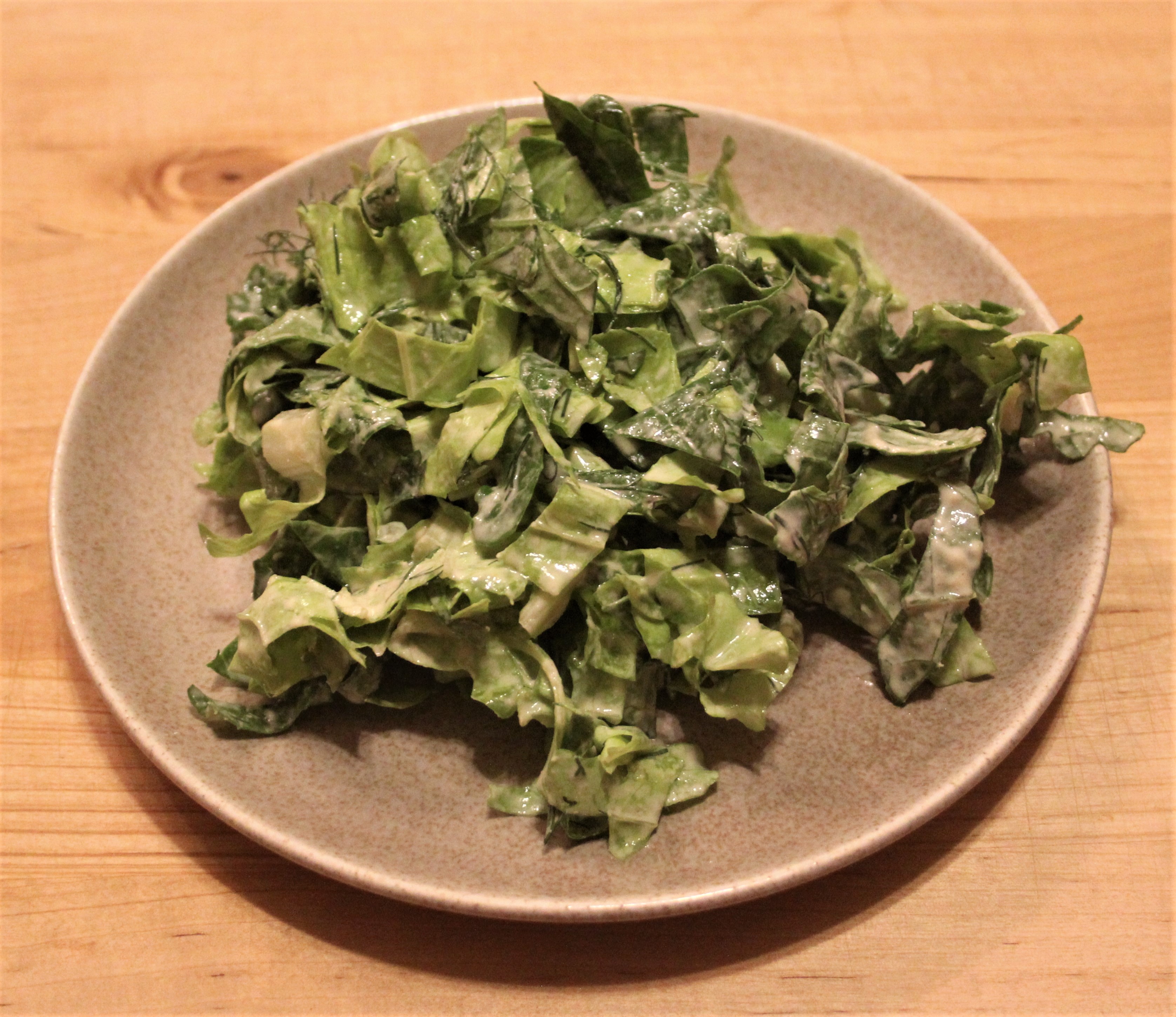 At first I fear the change of seasons. Did I fit in everything I wanted to in the past season> The answer is always no. But sure enough I come to appreciate the change of pace and all the joy a new season brings with it. Autumn is a time to slow down, bake, and drink tea, while still enjoying some warm days and abundant produce. It is the perfect time to make those crossover recipes with summer ingredients and fall flavors.
At first I fear the change of seasons. Did I fit in everything I wanted to in the past season> The answer is always no. But sure enough I come to appreciate the change of pace and all the joy a new season brings with it. Autumn is a time to slow down, bake, and drink tea, while still enjoying some warm days and abundant produce. It is the perfect time to make those crossover recipes with summer ingredients and fall flavors.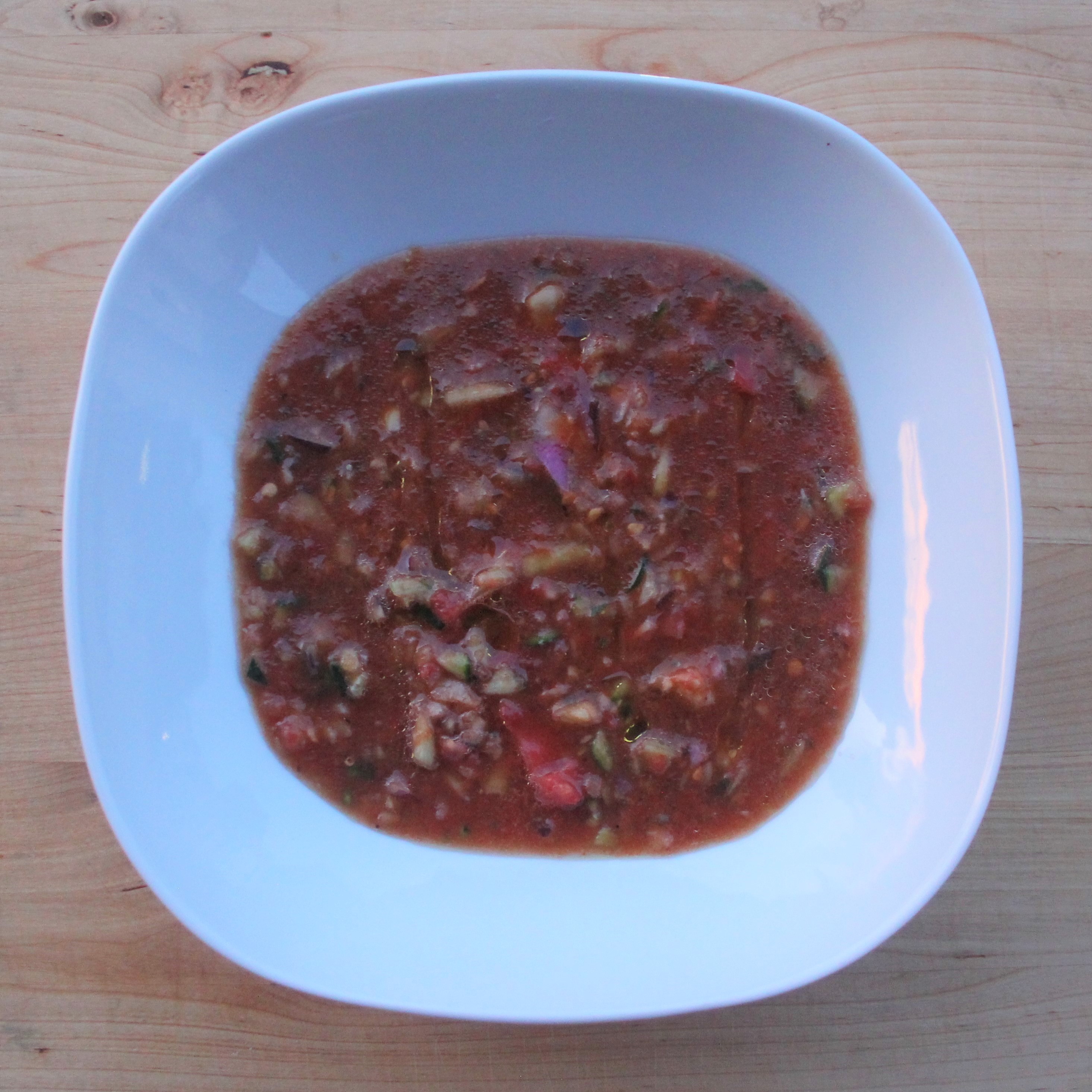 I found it hard to believe that this recipe wasn’t already posted here. I’ve been making this gazpacho for over 10 years, and it remains my favorite. It has classic ingredients, and with a food processor comes together in about 15 minutes. By design it is a chunky gazpacho, but you can adjust the texture by pureeing some and stirring it back into the bowl (or puree individual portions, if like me, some at your dinner table like a completely smooth gazpacho while others do not. I’ve struggled to get excited about a lot of summer soups, but this one is so refreshing and easy I really don’t think I need any others.
I found it hard to believe that this recipe wasn’t already posted here. I’ve been making this gazpacho for over 10 years, and it remains my favorite. It has classic ingredients, and with a food processor comes together in about 15 minutes. By design it is a chunky gazpacho, but you can adjust the texture by pureeing some and stirring it back into the bowl (or puree individual portions, if like me, some at your dinner table like a completely smooth gazpacho while others do not. I’ve struggled to get excited about a lot of summer soups, but this one is so refreshing and easy I really don’t think I need any others.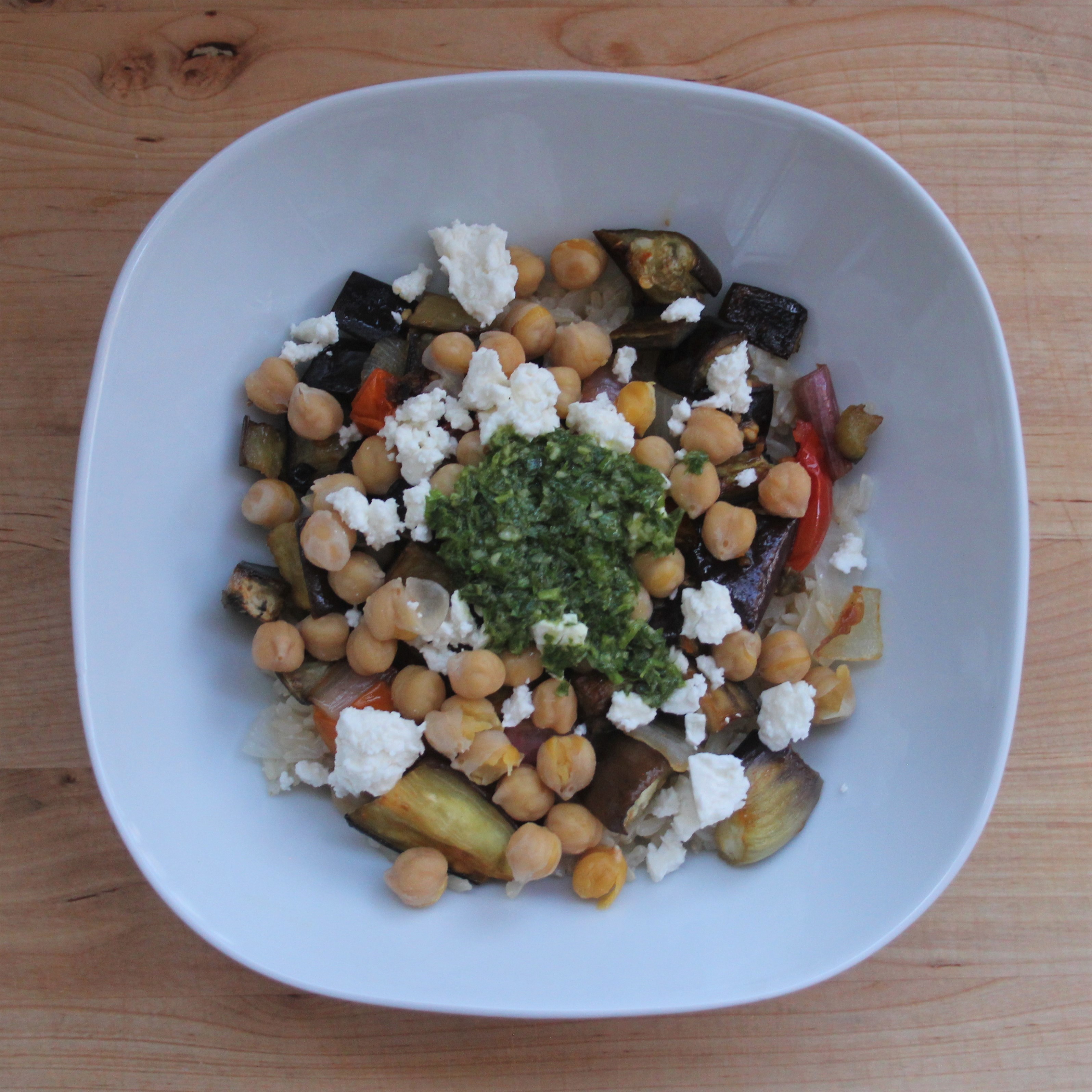 When I came home with my CSA share I laid the mountain of vegetables out on my kitchen table and started pulling out cookbooks. I was paralyzed with dinner indecision, but after much perusing I saw a recipe in
When I came home with my CSA share I laid the mountain of vegetables out on my kitchen table and started pulling out cookbooks. I was paralyzed with dinner indecision, but after much perusing I saw a recipe in 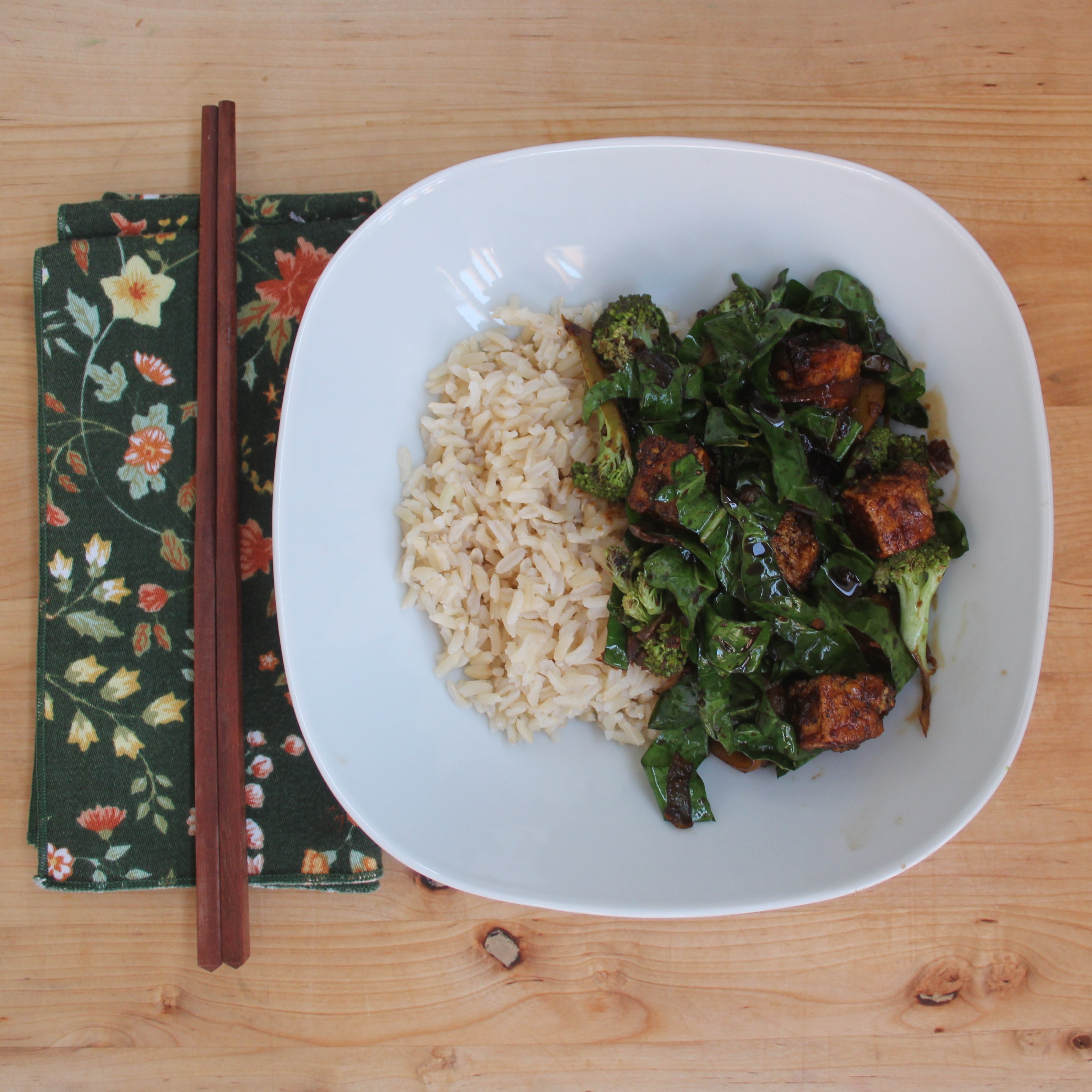 The star of my
The star of my 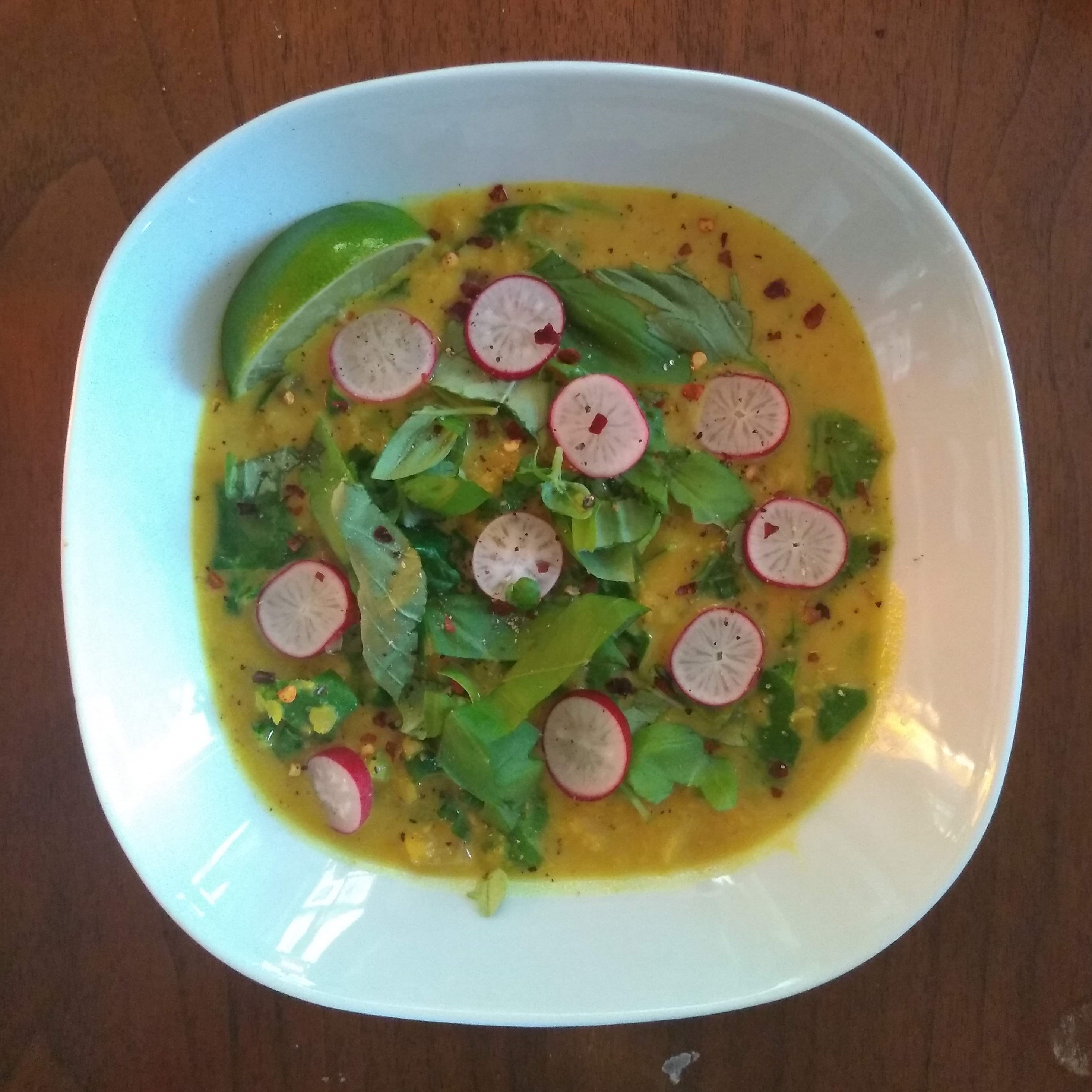
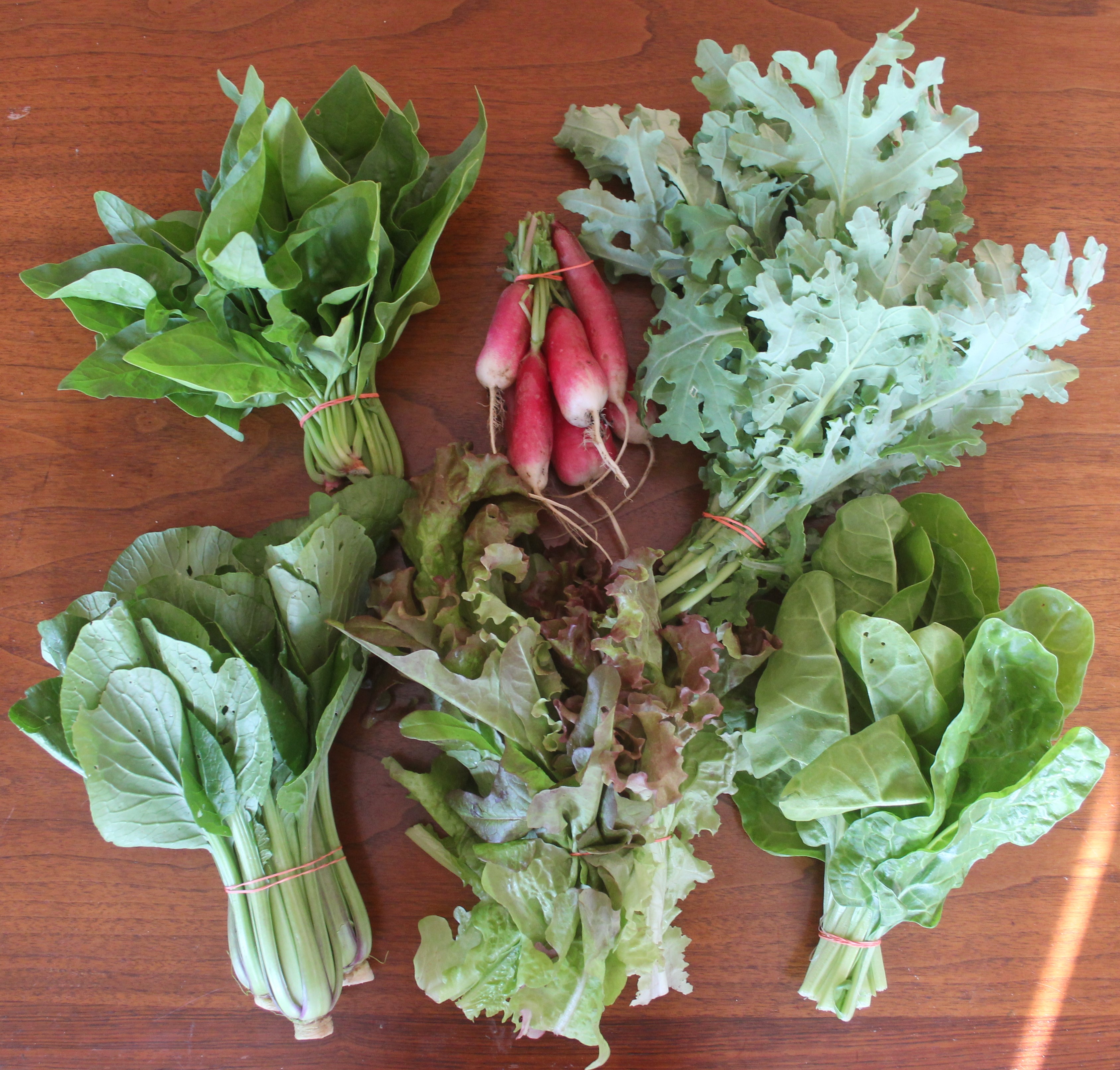
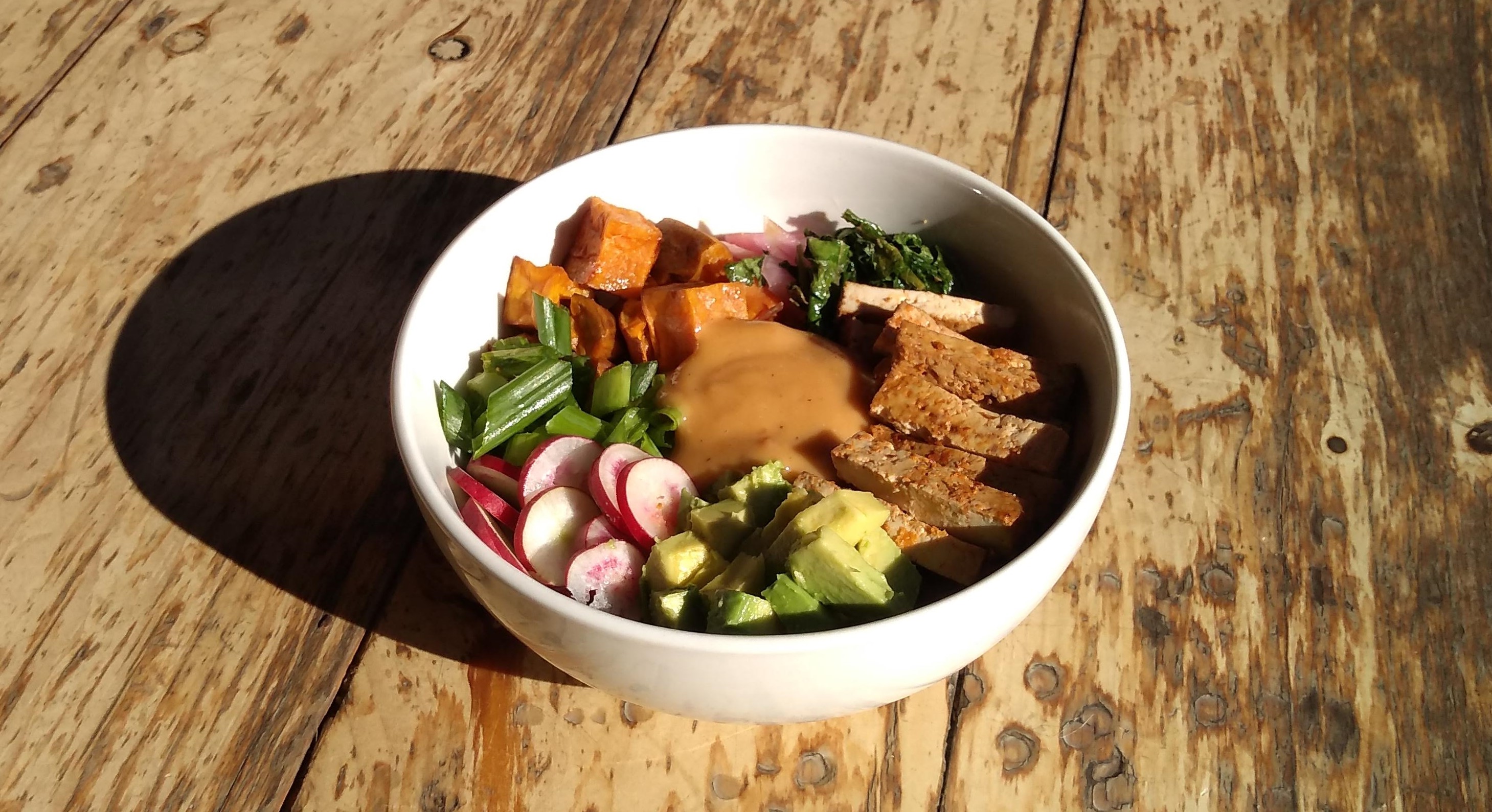 What should make when you need a reset after weekend eating? When you aren’t fully inspired, but have a fridge full of random vegetables? Or, when you feel like there is nothing in the fridge? When you have a bunch of diet restrictions at the dinner table? When you want to eat something incredibly satisfying and delicious?
What should make when you need a reset after weekend eating? When you aren’t fully inspired, but have a fridge full of random vegetables? Or, when you feel like there is nothing in the fridge? When you have a bunch of diet restrictions at the dinner table? When you want to eat something incredibly satisfying and delicious?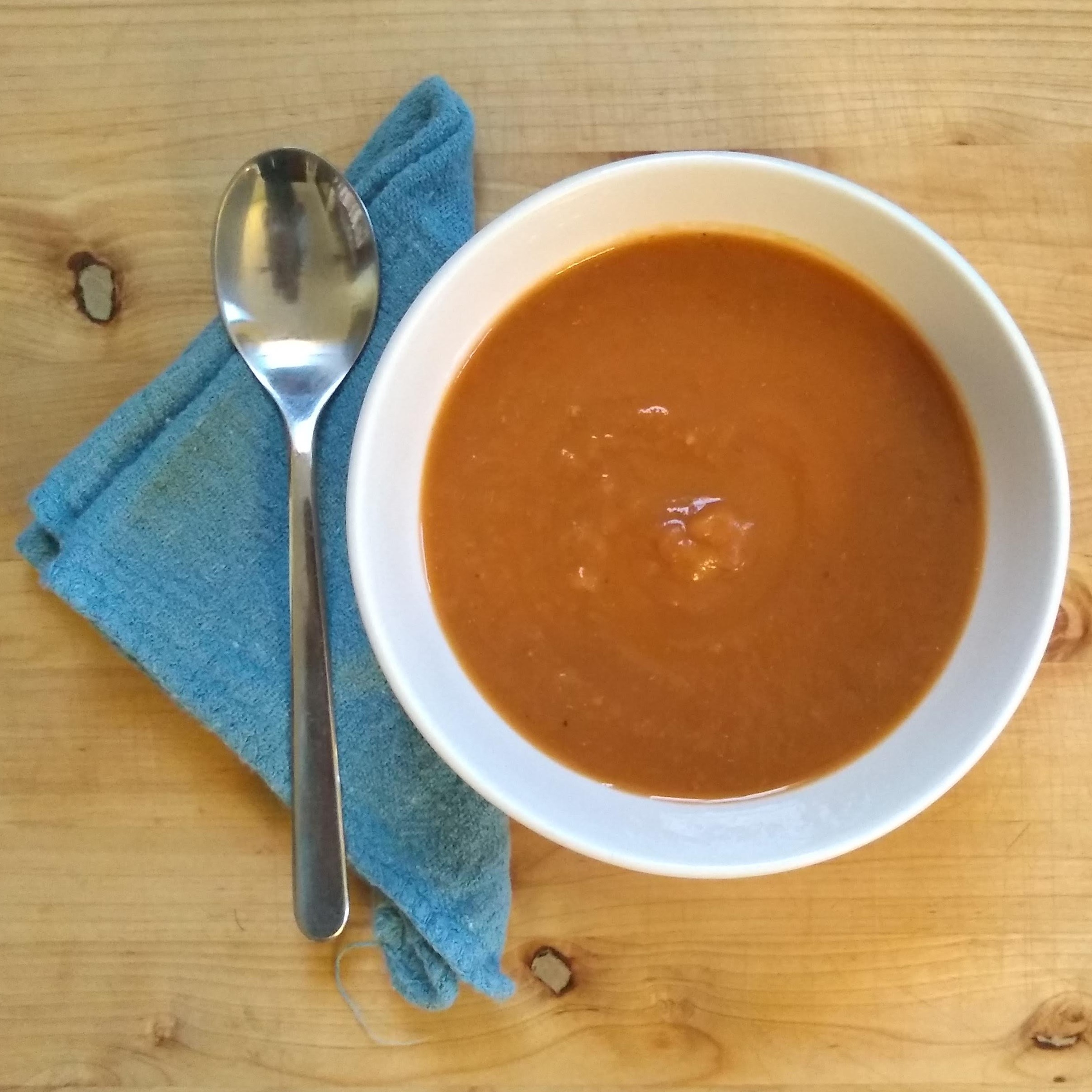 I have a certain affinity for unappetizing foods. Foods that look terrible no matter what, but taste so good. Poutine. Beans and rice. Baba ghanoush. This soup certainly fits into that category. It is completely brown. Not the rich, glistening brown of a crispy French fry, but the flat brown of a pureed soup. But (but!) it is worth making.
I have a certain affinity for unappetizing foods. Foods that look terrible no matter what, but taste so good. Poutine. Beans and rice. Baba ghanoush. This soup certainly fits into that category. It is completely brown. Not the rich, glistening brown of a crispy French fry, but the flat brown of a pureed soup. But (but!) it is worth making.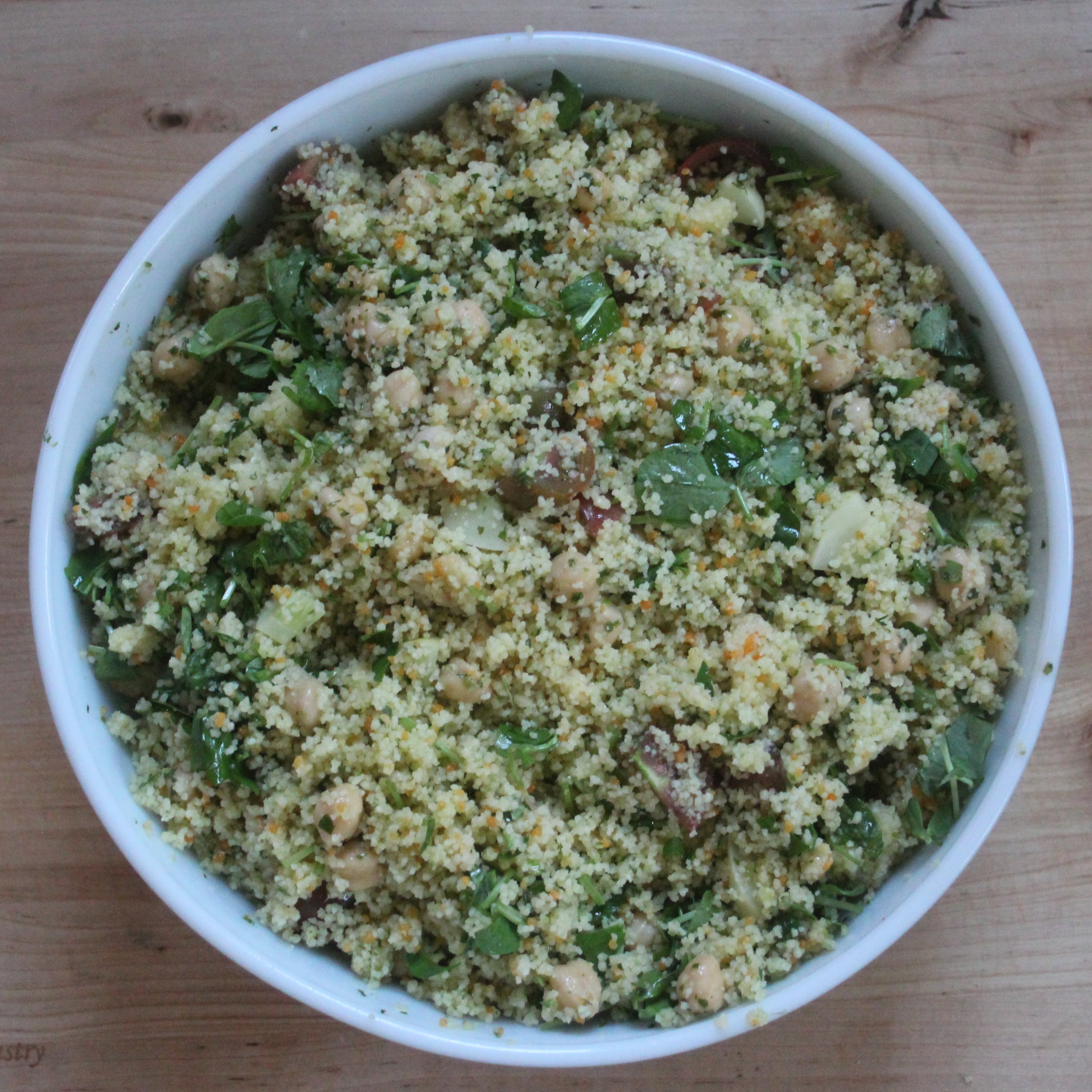 The majority of August was a relief from the intense heat of July. That heat and humidity are back in full force this week, and I did my best to come up with a dinner that used as little cooking as possible. This is a quick couscous salad with lots of fresh herbs, chickpeas, cherry tomatoes, cucumbers, and pea shoots. It is a meal in itself, but would be an excellent picnic side or bed for some juicy grilled chicken or sausage.
The majority of August was a relief from the intense heat of July. That heat and humidity are back in full force this week, and I did my best to come up with a dinner that used as little cooking as possible. This is a quick couscous salad with lots of fresh herbs, chickpeas, cherry tomatoes, cucumbers, and pea shoots. It is a meal in itself, but would be an excellent picnic side or bed for some juicy grilled chicken or sausage.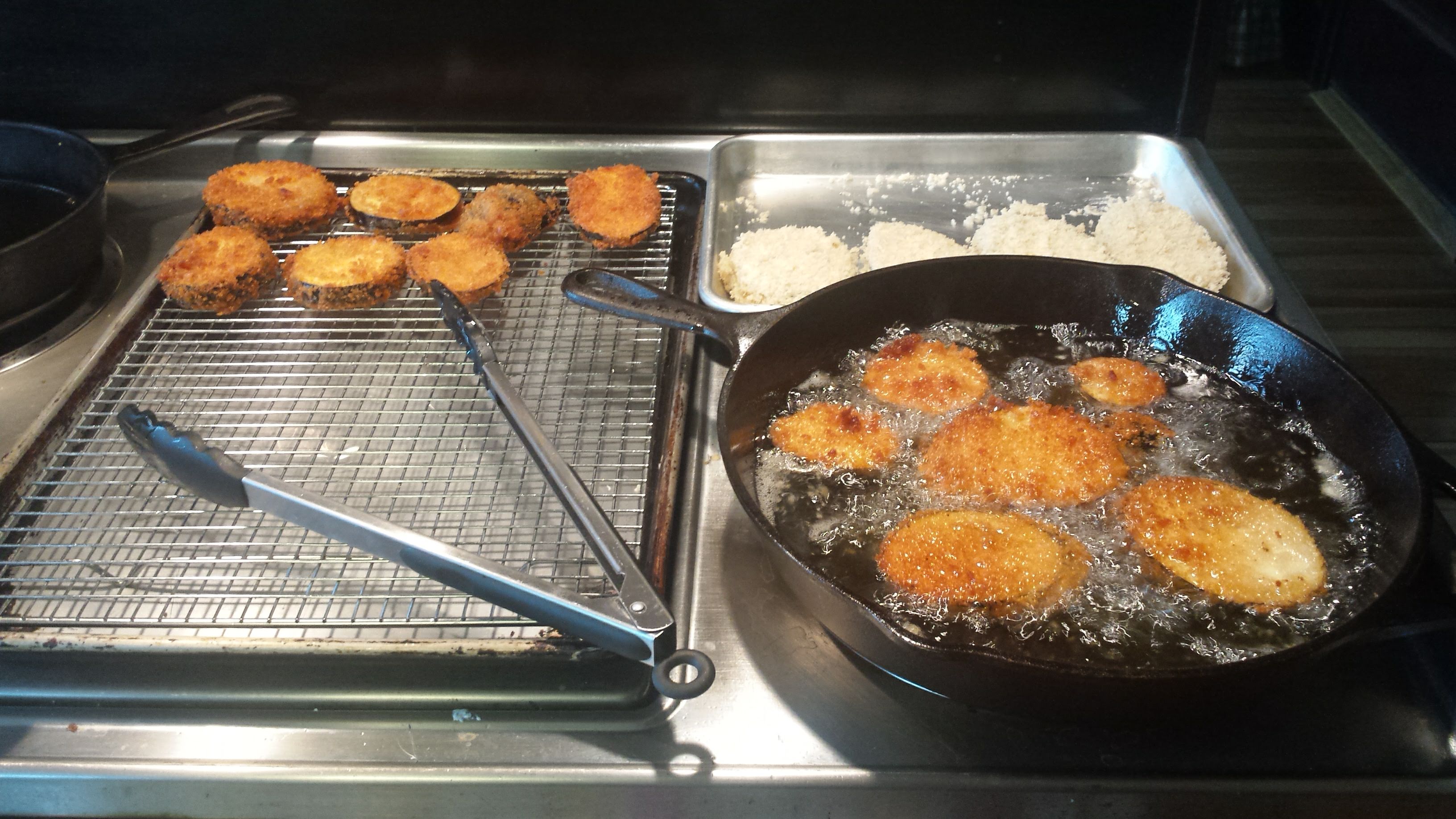 Sunday night I was surrounded by cookbooks, making a list of all the dishes I HAVE to cook this month. It is peak harvest in New England, and every year at this time I constantly feel like I am missing opportunities to eat the best, freshest produce in the all ways I’ve been dreaming of since December. Everything I love ripens at once – raspberries, blueberries, blackberries, nectarines, peaches, plums, tomatoes, eggplant, zucchini, summer squash, green beans, greens, and every herb you can imagine.
Sunday night I was surrounded by cookbooks, making a list of all the dishes I HAVE to cook this month. It is peak harvest in New England, and every year at this time I constantly feel like I am missing opportunities to eat the best, freshest produce in the all ways I’ve been dreaming of since December. Everything I love ripens at once – raspberries, blueberries, blackberries, nectarines, peaches, plums, tomatoes, eggplant, zucchini, summer squash, green beans, greens, and every herb you can imagine.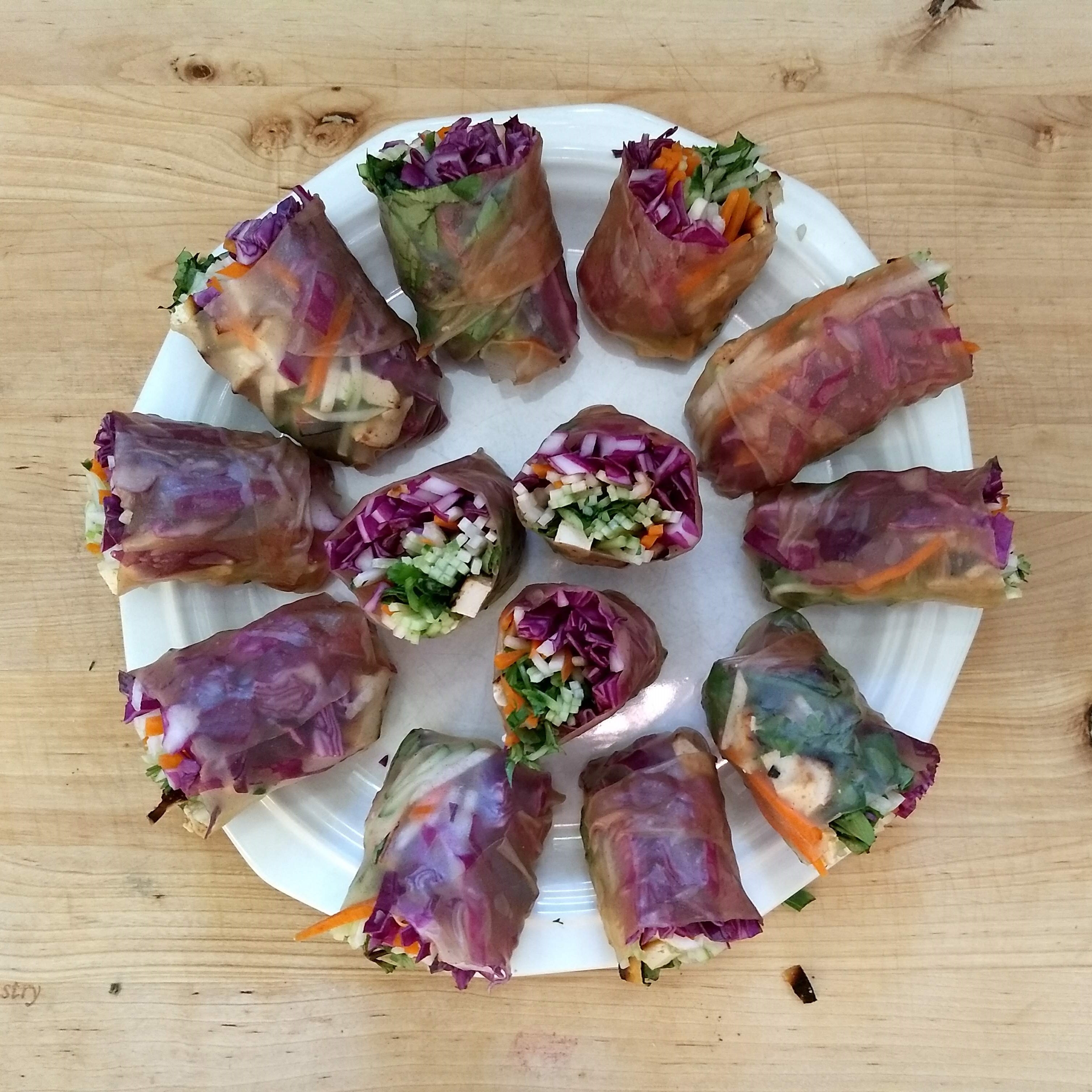 I’ve waxed poetic on the magic of having
I’ve waxed poetic on the magic of having 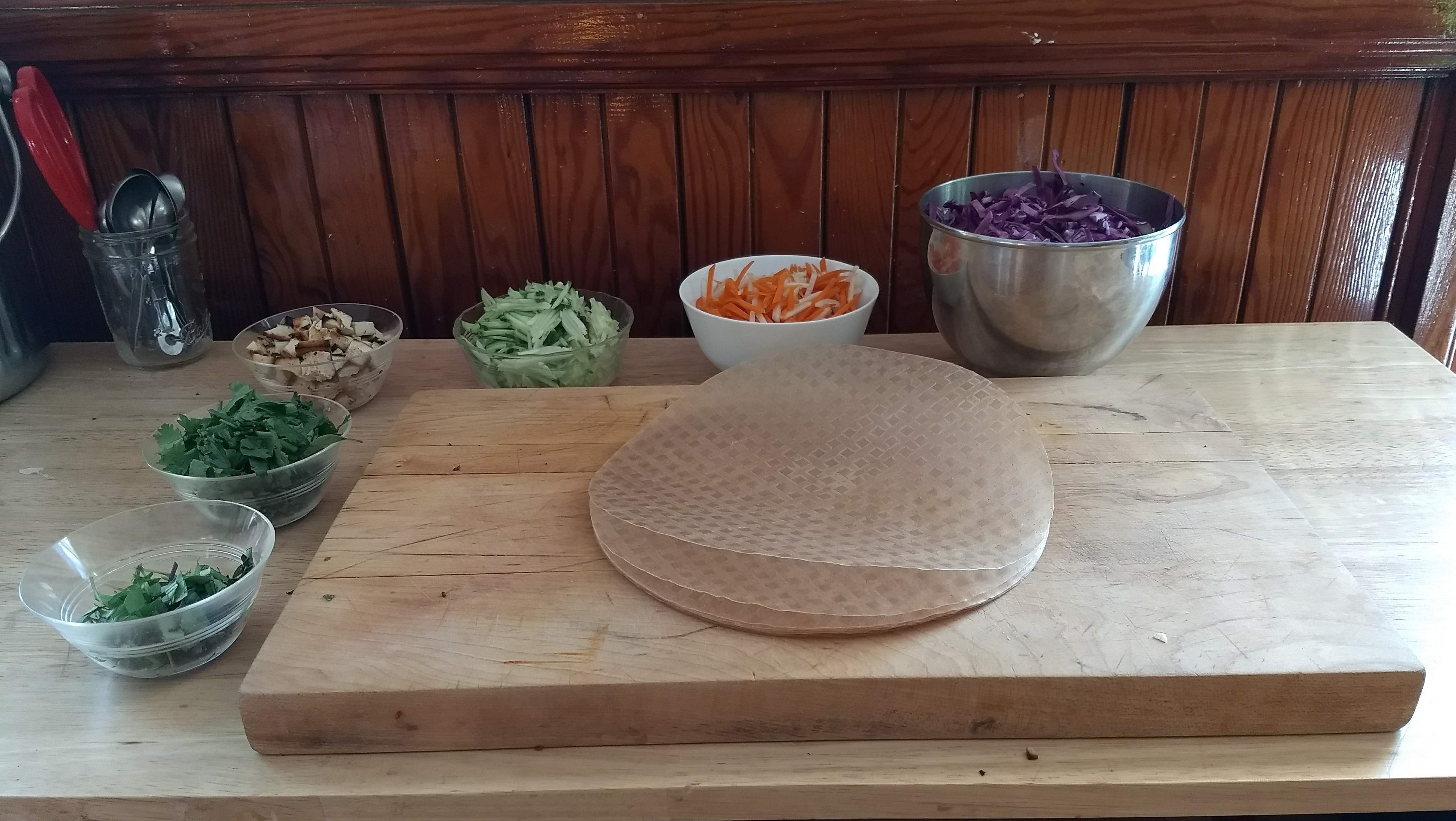
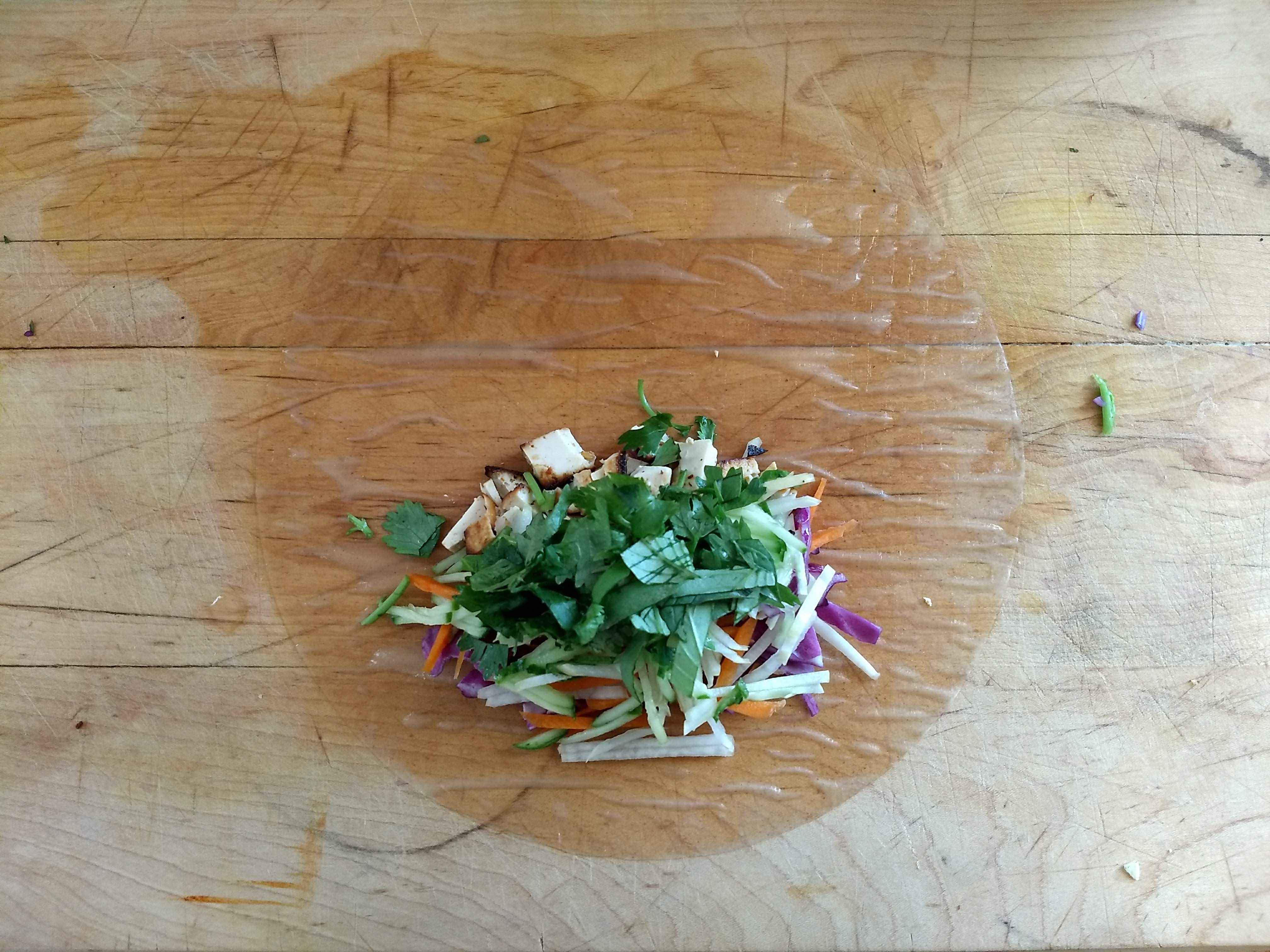
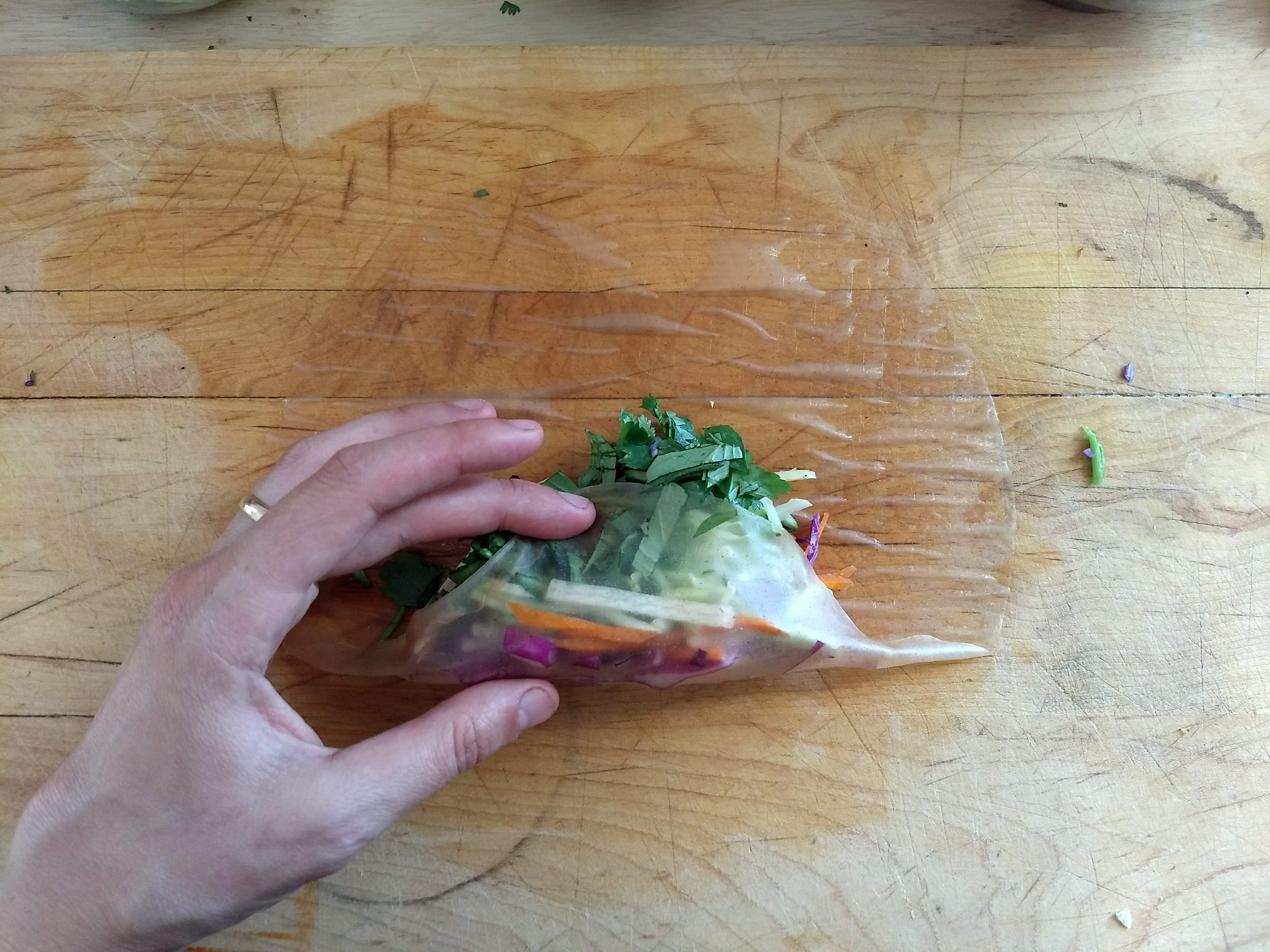
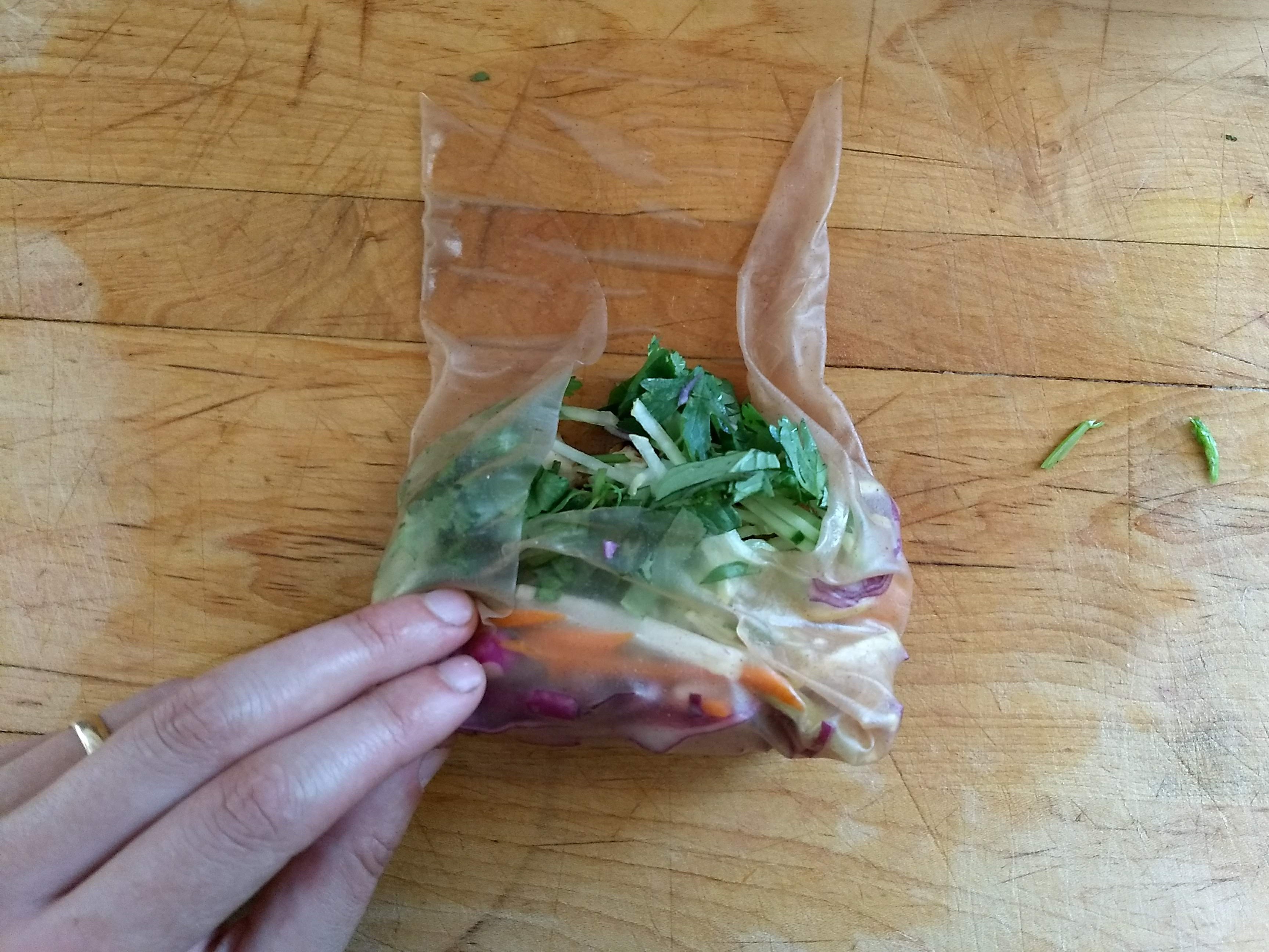
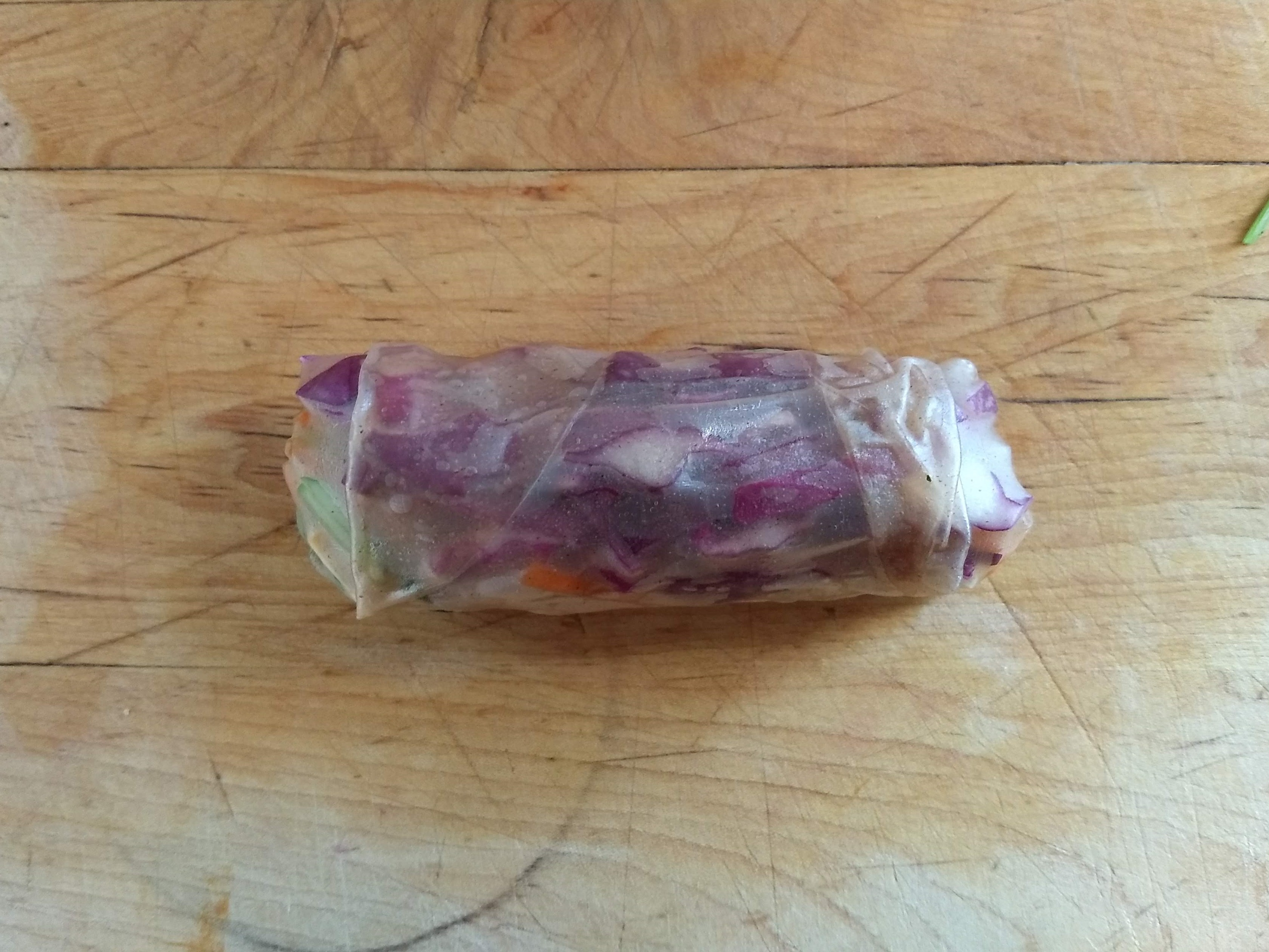
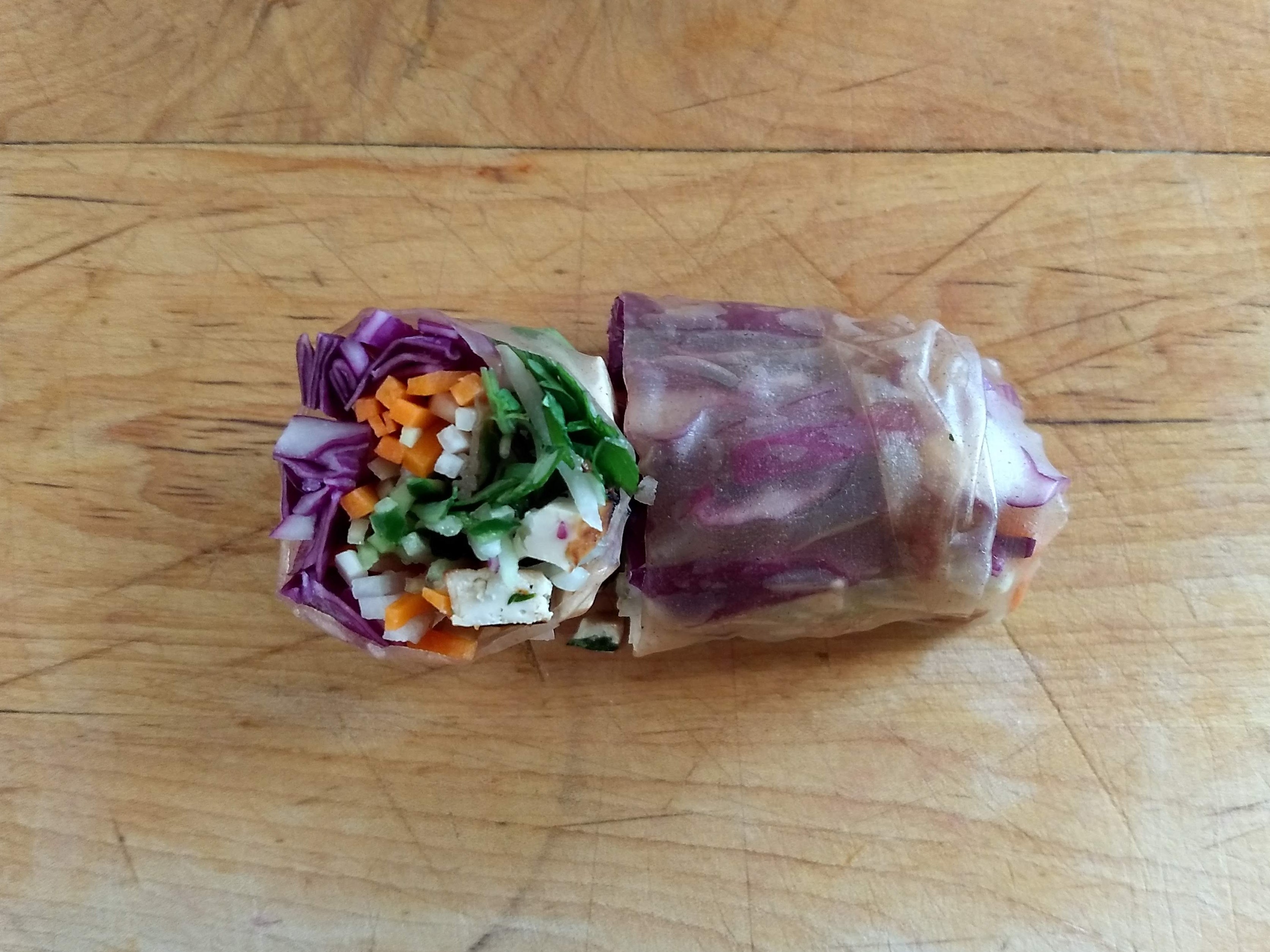
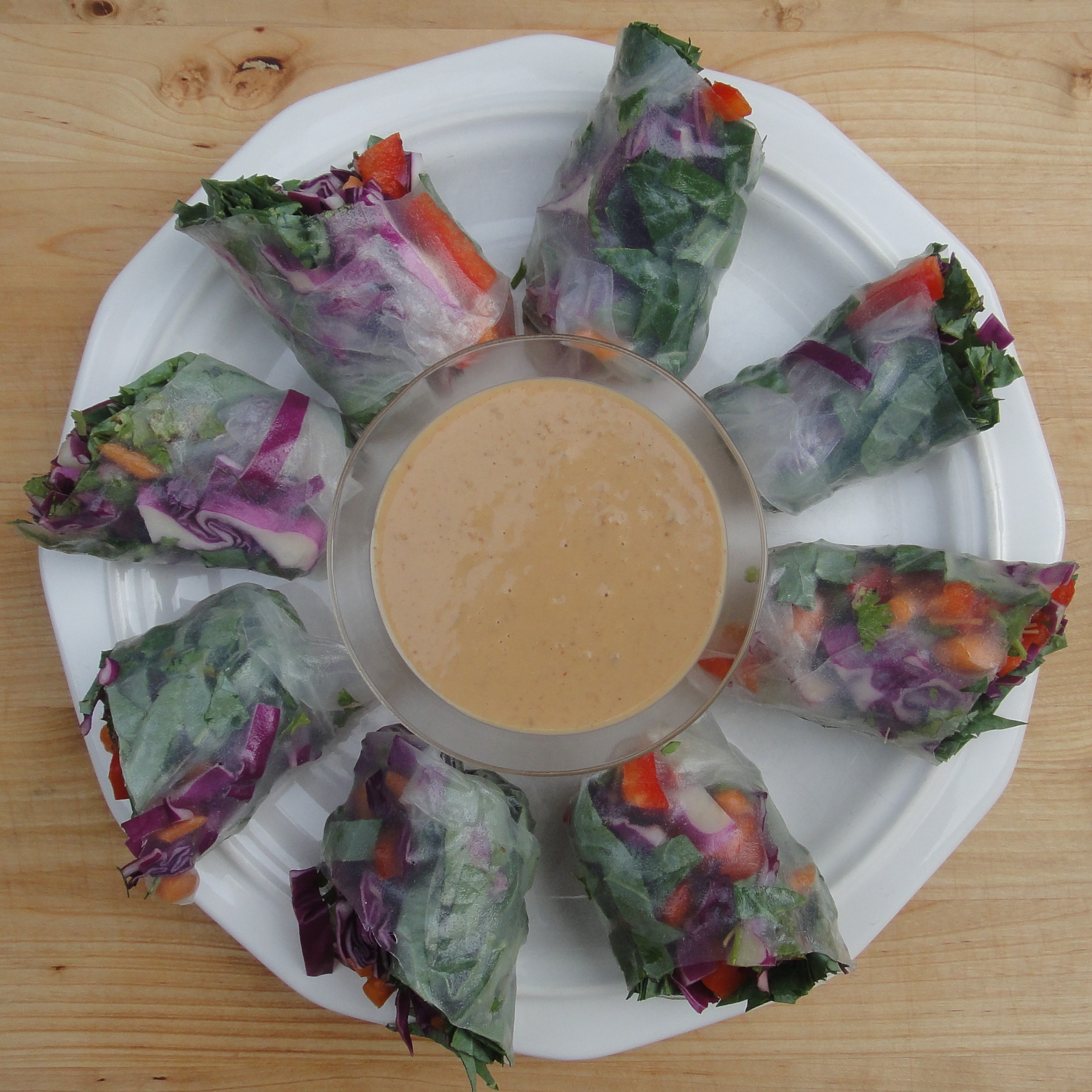 After last month’s
After last month’s 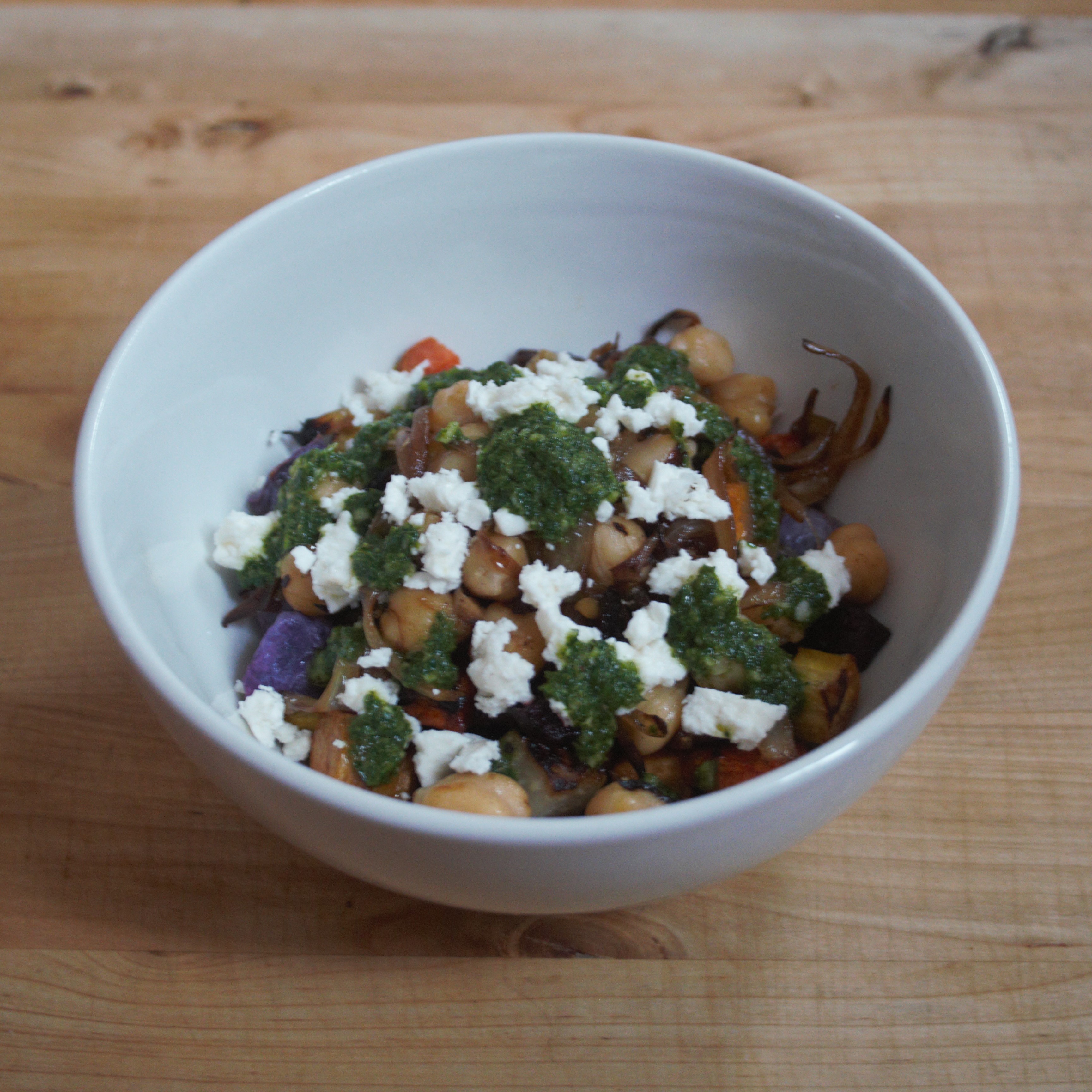 This recipe was born before I was headed away for a weekend and trying to use up veg in the fridge. After an overzealous trip to the winter farmers market I had celeriac, beets, radishes, and sweet potatoes. I knew I wanted something bright to counter the earthiness of the root vegetables, so out came the parsley and lemon. Chickpeas made it into a full meal. The feta adds a great salty tang, but can easily be omitted for a vegan meal. This bowl is distinctly wintery, but much more like bright sunshine reflecting off of white snow than dreary, pervasive brown.
This recipe was born before I was headed away for a weekend and trying to use up veg in the fridge. After an overzealous trip to the winter farmers market I had celeriac, beets, radishes, and sweet potatoes. I knew I wanted something bright to counter the earthiness of the root vegetables, so out came the parsley and lemon. Chickpeas made it into a full meal. The feta adds a great salty tang, but can easily be omitted for a vegan meal. This bowl is distinctly wintery, but much more like bright sunshine reflecting off of white snow than dreary, pervasive brown.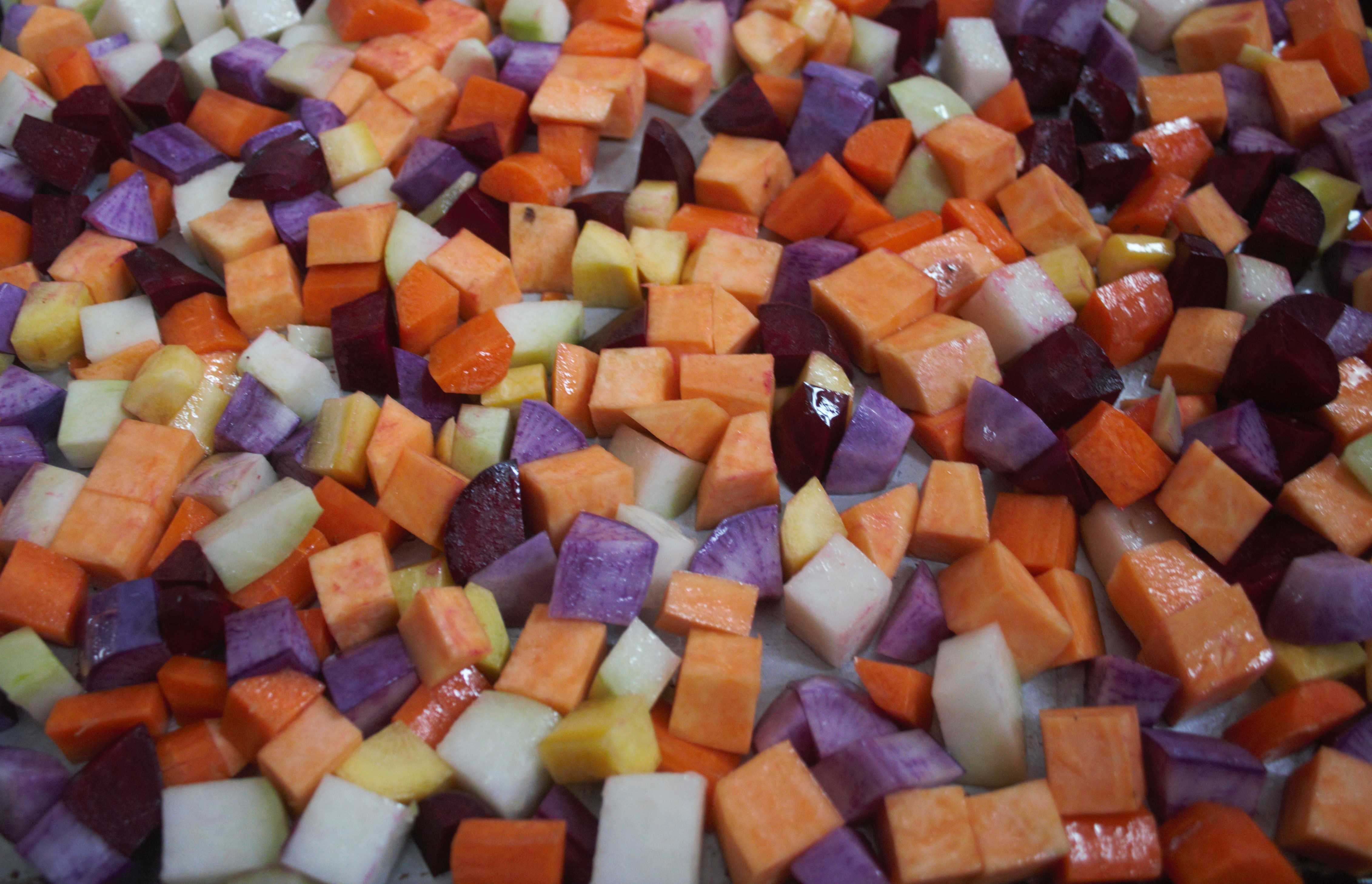
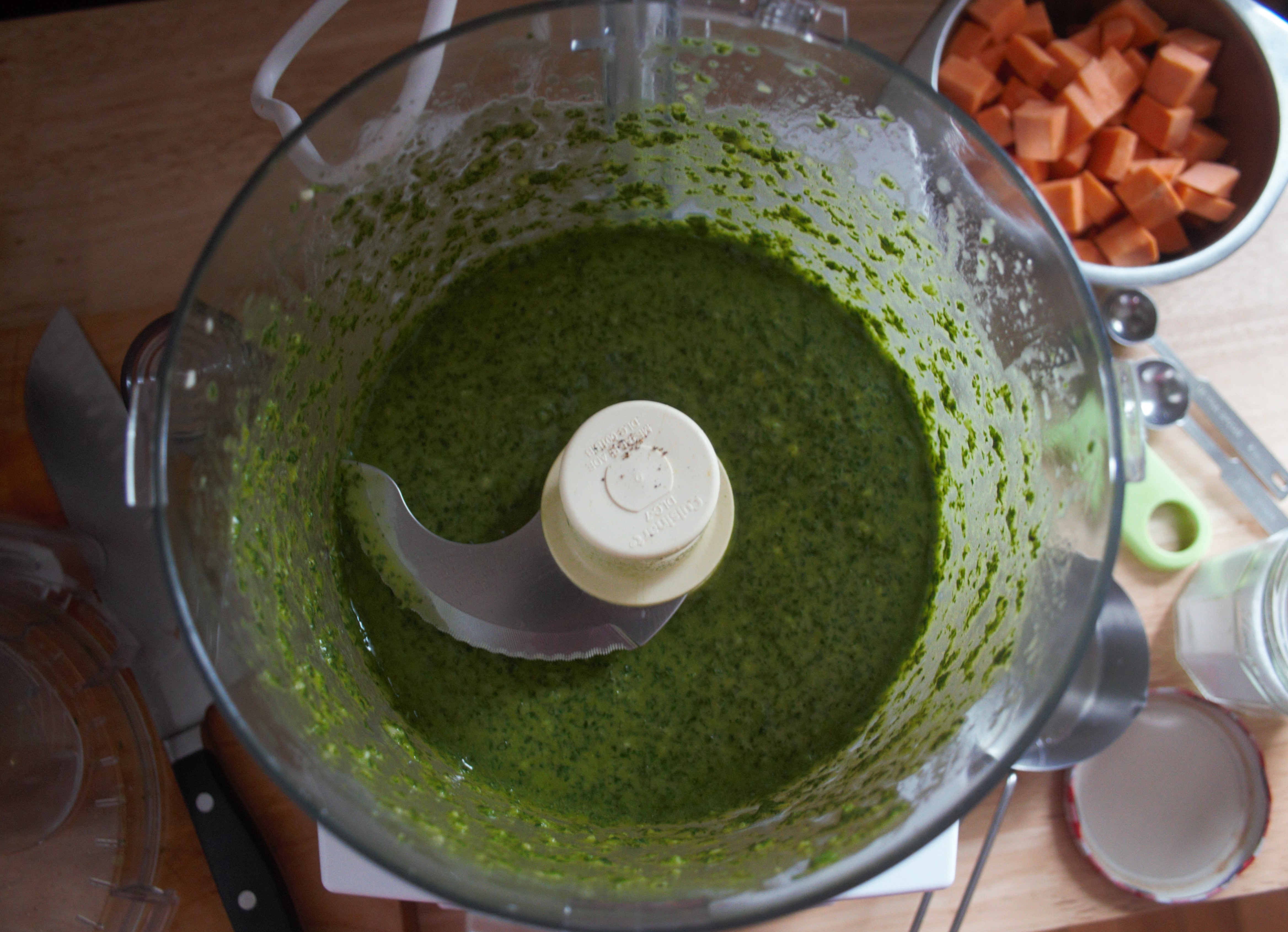 Winter Root Vegetable Bowls with Vibrant Parsley Sauce
Winter Root Vegetable Bowls with Vibrant Parsley Sauce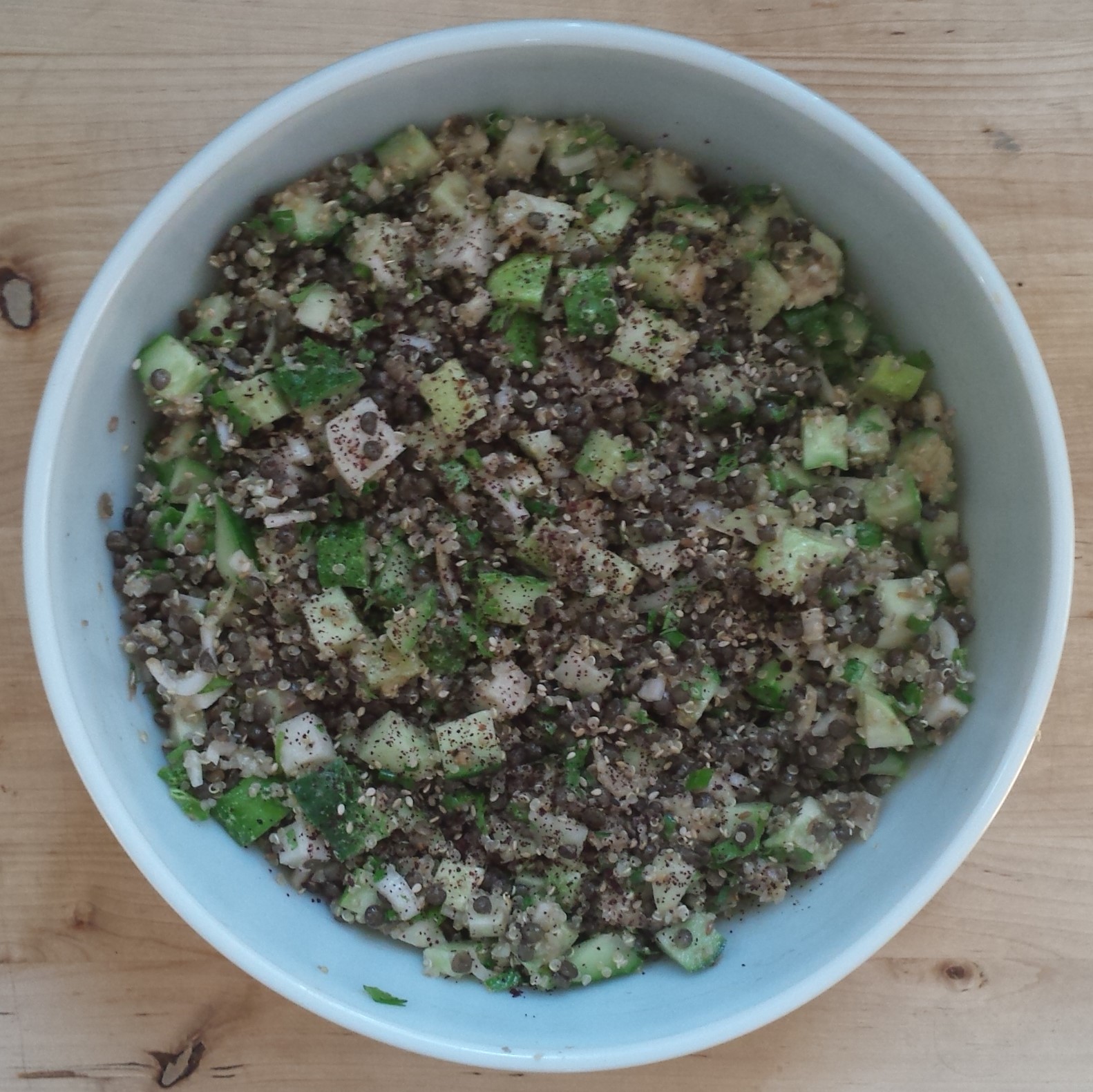 I didn’t have a plan for dinner tonight. We already had
I didn’t have a plan for dinner tonight. We already had